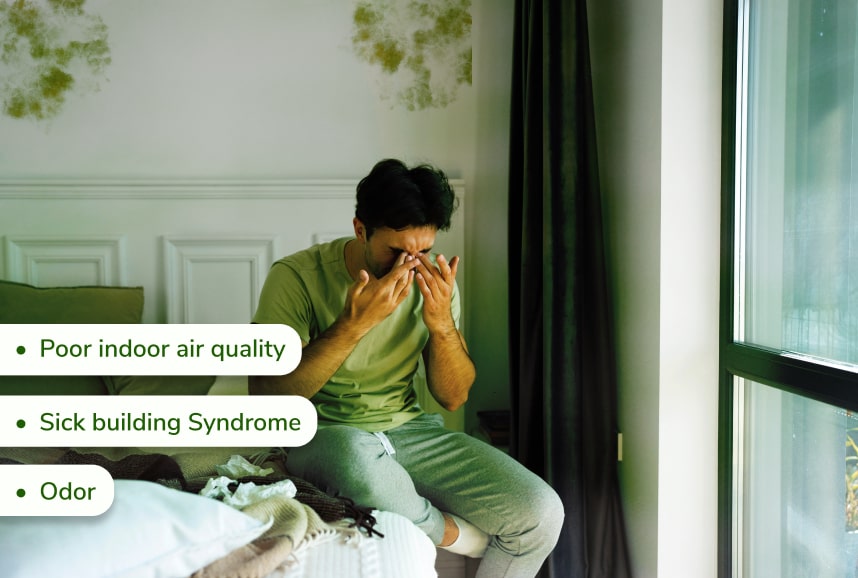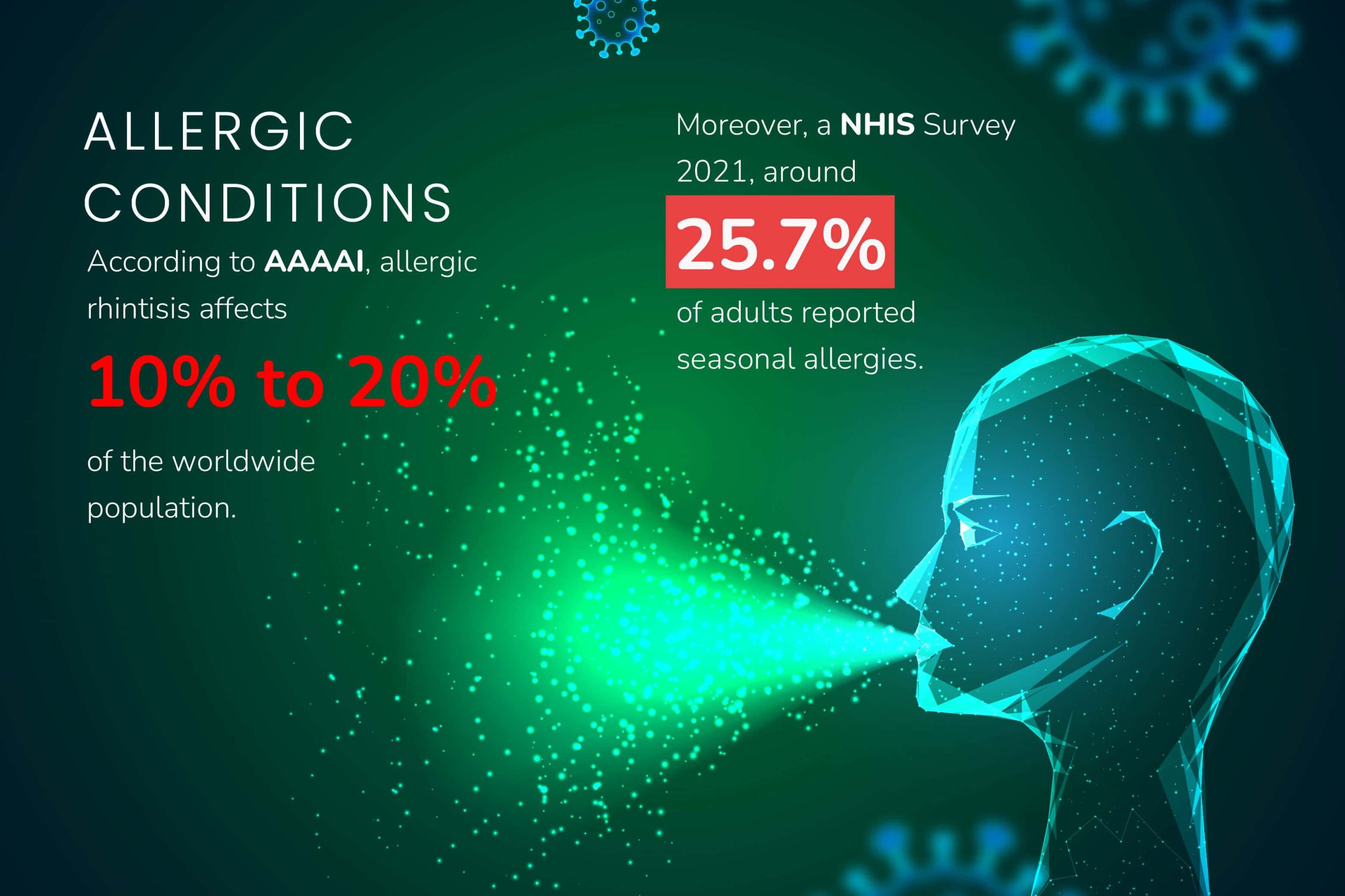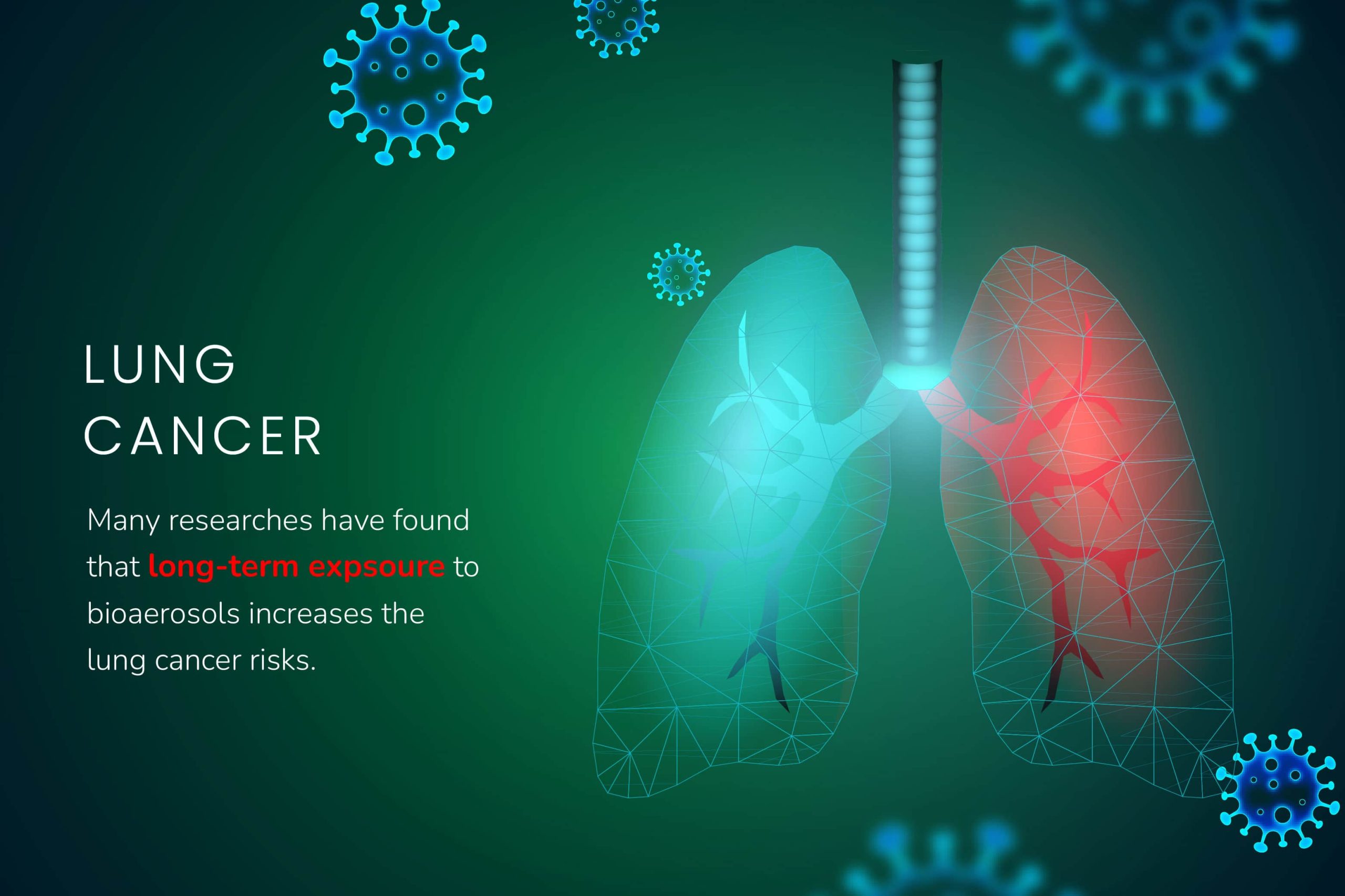Nowadays, every home has people with allergies or getting sick frequently. Do you notice foul smells indoors or mold and fungi on your walls? Your house stores more pollutants than the outdoor environment. With it, many reasons cause bacteria, mould spores and many other toxic particles included. These invisible particles are known as bioaerosols in air quality. It can impact the air quality and could be very harmful to your health.
Did you know indoor air is five times more contaminated than outdoor air? Because indoor air highly stores many toxins and invisible particles. These can cause everything from mild allergies to severe respiratory conditions. Let us delve into the hidden world of bioaerosols in air quality and how it can affect your health. Also, you can easily learn to manage them to ensure health and clean indoor air.
What is bioaerosols?
The tiny biological particles suspended in the air are known as Bioaerosols. These are the particulate matter also known as BioPM. It includes bacteria, viruses, pollen, mould spores and other particles. These particles originate from living organisms and are included in the air quality. It can affect the indoor and outdoor air quality. Many outdoor activities emit bioaerosols in the air including natural and anthropogenic. Such as rain, wave splash, wind, cooling towers, agricultural processes etc.
The role of bioaerosols in air quality is making it more polluted and toxic. Unlike gases, these particles can lead to extreme health conditions by interfering with normal bodily functions.
Here are the types of bioaerosols in air:
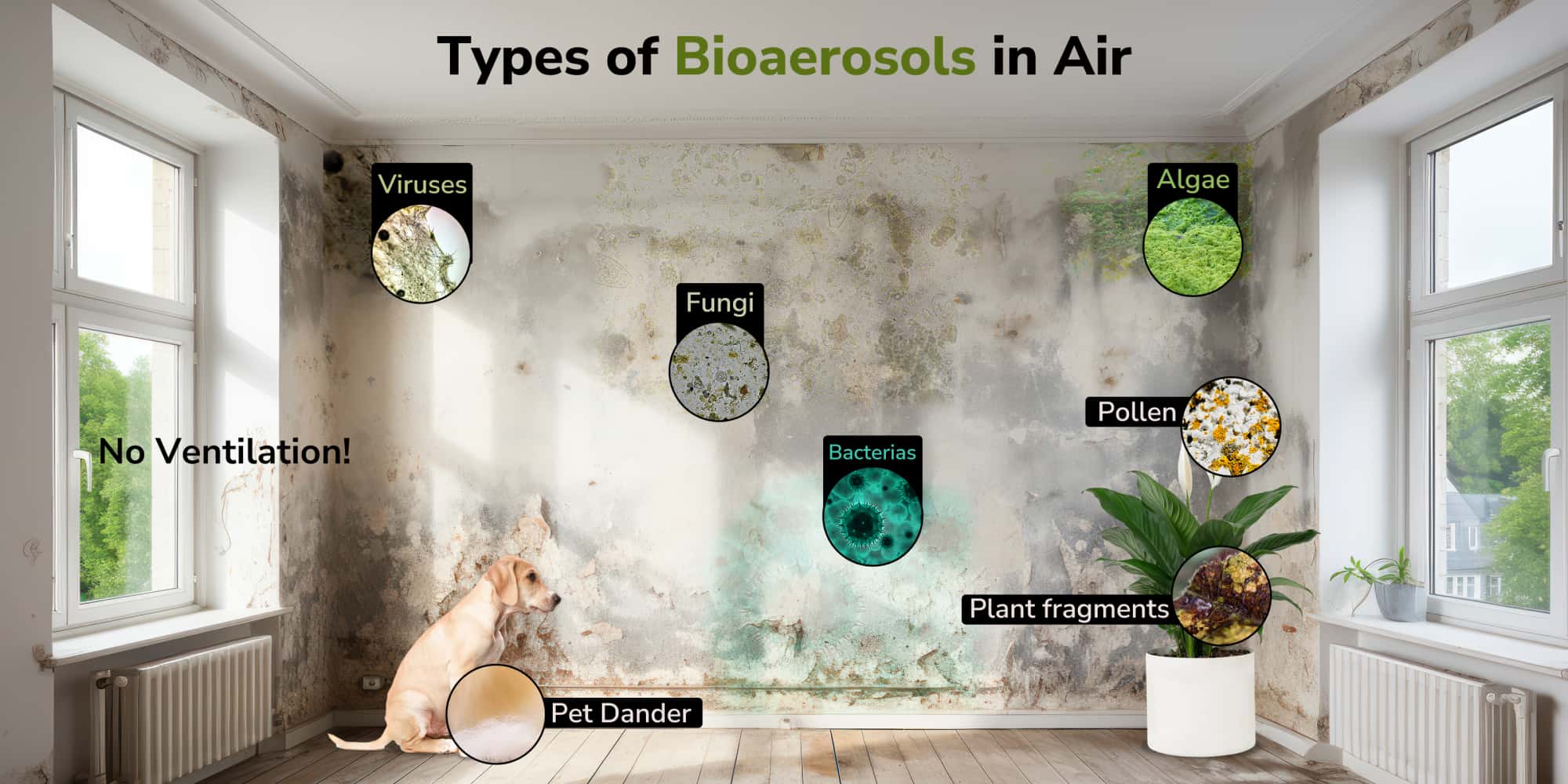
- Bacteria:
Bacteria is a single-celled microorganism that is almost everywhere including in the air. There are some good bacteria as well but some bacteria are extreme because they cause severe issues.
- Viruses:
These are smaller than bacteria and can cause several diseases from the common cold to other respiratory problems.
- Fungi:
These are visible in your homes mostly during humid conditions such as mould spores and yeast.
- Pollen:
Plants produce pollen grains for reproduction and can cause seasonal allergies or trigger conditions in sensitive individuals.
- Algae:
Commonly, algae associate with water but some can become airborne. These can contribute to several respiratory problems.
- Animal Dander:
Most common in homes with pets. As pets shade tiny flakes of skin that can cause various health issues.
- Plant Fragments:
Some parts of plants can also become airborne including leaves, stems and seeds.
How do bioaerosols affect the indoor air quality?
Bioaerosols present indoor and outdoor air that can affect the air quality. It can cause extreme cases because bioaerosols can chemically react with other pollutants. It results in the emission of other toxic particles in the air. For instance, ozone and single fungal aerosol chemically react and form secondary pollutants. Many studies have found that a single bioaerosol can chemically react with any gas and form other toxic pollutants.
1. Poor indoor air quality:
Bioaerosols can affect the overall indoor air quality. Because these are suspended from various sources in any indoor setting. Moreover, high humidity and poor ventilation play a major role in their spread and growth. For instance, more humid or damp conditions increase the growth of mould.
2. Sick building Syndrome:
High concentrations of bioaerosols can cause severe health issues. Long-term exposure to poorly ventilated buildings can cause Sick Building Syndrome. It includes various symptoms like headaches, dizziness, nausea and various irritations.
3. Odour and air freshness:
Do you know how many odours can be emitted by the bacterial growth? Some bioaerosols produce unpleasant odours. It results in poor indoor environment and affects the health. Foul smell can impact the overall well-being and comfort.
What are the health effects of inhaling bioaerosols?
Bioaerosols in air quality can cause various health issues. As we inhale these aerosols that can trigger several conditions. Such as you can face everything from the common cold to extreme respiratory conditions. Let us know about the health effects of inhaling bioaerosols on air quality:
1. Infectious diseases:
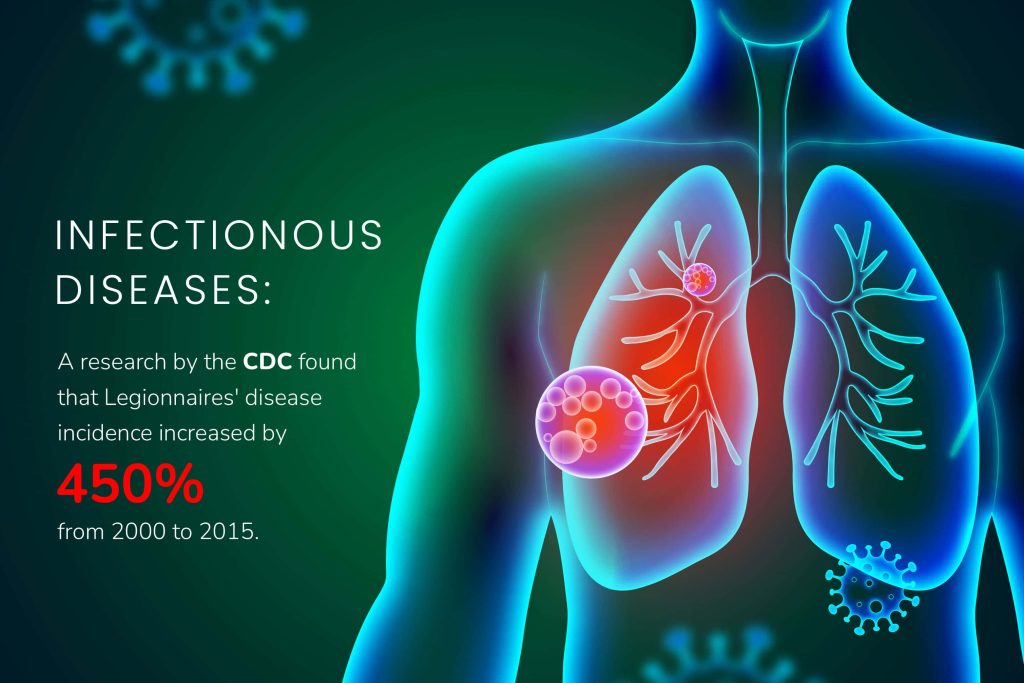
Many bacteria and viruses in bioaerosols can trigger infections. For instance, recently, the COVID-19 pandemic caused several deaths. With it, some common conditions such as tuberculosis and pneumonia caused by Mycobacterium tuberculosis and Legionella pneumophila bacteria. These cases are increasing as research by the CDC found that Legionnaires’ disease incidence increased by 450% from 2000 to 2015.
2. Allergic conditions:
Many bioaerosols in air quality such as pollen, dust mites, pet dander etc. cause common allergies. Especially in sensitive individuals. These particles can lead to conditions like coughing, itchy eyes, sneezing, and other irritations with asthma conditions. According to AAAAI, allergic rhinitis affects 10% to 20% of the worldwide population. Moreover, in a NHIS Survey 2021, around 25.7% of adults reported seasonal allergies.
3. Respiratory problems:
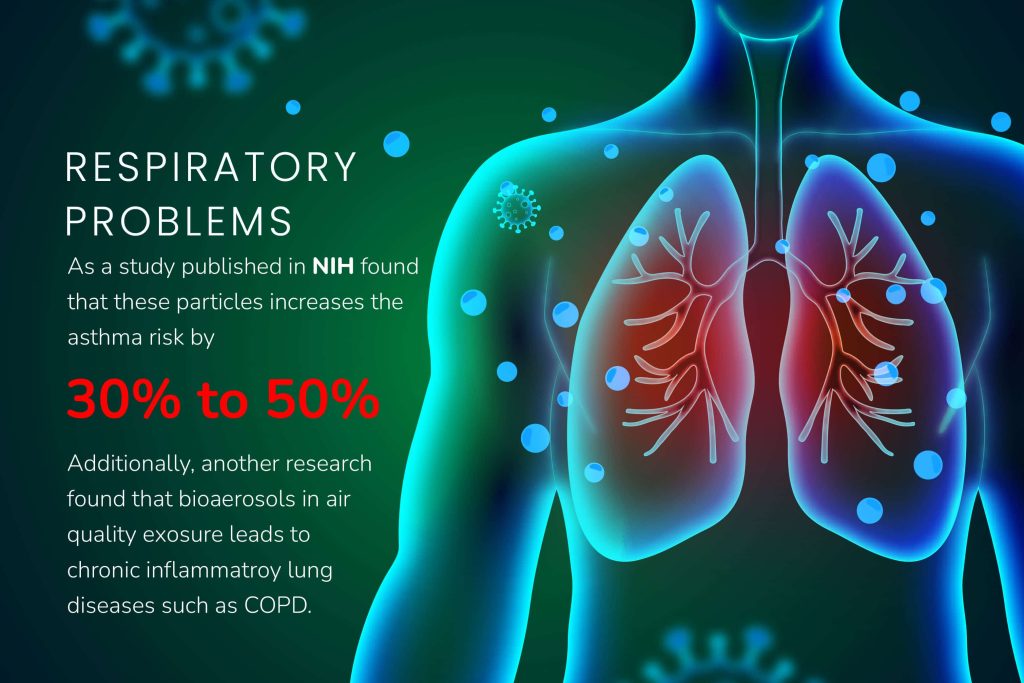
Bioaerosols in air quality can cause severe respiratory conditions like asthma or bronchitis. Mould spores, indoor dampness and fungal contamination exacerbate the problems. A study published by NIH found that these particles increase the asthma risk by 30% to 50%. Additionally, another research found that bioaerosols in air quality exposure lead to chronic inflammatory lung diseases such as COPD (Chronic Obstructive Pulmonary Disease)
4. Lung cancer:
Prolonged bioaerosols in air quality exposure can cause chronic health issues. It can lead to severe infections or conditions like cancer. Many researchers have found that long-term exposure to bioaerosols increases the lung cancer risks.
How to Protect Yourself from Bioaerosols in Air Quality?
You can effectively monitor and control bioaerosol exposure to maintain better air quality. Let us know some practical techniques to protect yourself from bioaerosols in air quality:
Monitoring:
The first and foremost is air sample monitoring. It can perform with air sample collecting and detecting in labs. These methods can help in detecting and quantifying bioaerosols in air quality. For it, several techniques can use to measure the concentrations. These can analyze with molecular or microbiological methods. As it helps in identifying the accurate concentrations present of bioaerosols in air quality.
Control strategies:
Now comes the top strategies to control the level of bioaerosols in the air:
1. Ventilation:
Ensure to open windows, and doors to let the air circulate. It helps in reducing the indoor bioaerosol in the air.
2. Filtration:
You can invest in HEPA (High-efficiency particulate air) filters. These filters can effortlessly capture bioaerosols from the air. As a result, you can breathe fresh air as this helps by trapping them.
3. Controlling humidity:
Humidity level plays a crucial role in indoor well-being. Since high humidity levels can increase mould or bacteria growth. For it, you can maintain appropriate humidity levels.
4. Cleaning regularly:
Maintain a cleaning routine that includes dusting and using disinfectants. For it, you can use the HVAC systems to reduce the bioaerosol sources.


